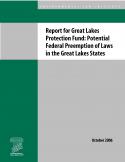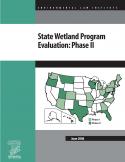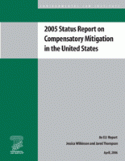
Research Reports
ELI publishes Research Reports available for free download that present the analysis and conclusions of the policy studies ELI undertakes to improve environmental law and policy. These reports contribute to education of the profession and disseminate diverse points of view and opinions to stimulate a robust and creative exchange of ideas. Those publications, which express opinions of the authors and not necessarily those of the Institute, its Board of Directors, or funding organizations, exemplify ELI’s commitment to dialogue with all sectors.
The conservation of biodiversity supports efforts to ensure the long-term stability of wildlife species and habitats, ecosystems and economies, and public health and welfare. Because the greatest threats to wildlife and biodiversity in the United States are habitat destruction, degradation, and fragmentation, purchasing land outright or protecting it through the acquisition of a conservation easement ensures the protection of lands important for habitat.
Read More >
Introduced to the Senate on February 10, 2005, Senate Bill 363 (S. 363, the Ballast Water Management Act) proposes to amend the Nonindigenous Aquatic Nuisance Prevention and Control Act of 1990 to establish a national approach for managing invasive species in ballast water. The proposed legislation also includes a declaration that federal ballast water exchange and ballast water treatment standards, implemented by the U.S. Coast Guard, supersede state and local laws deemed inconsistent with federal provisions.
Read More >
ELI is currently conducting a multi-phased study designed to describe and analyze seven "core" components of state wetland programs: state laws, regulations, and programs; monitoring and assessment; restoration programs and activities; water quality standards; public-private partnerships; coordination among state and federal agencies; and education and outreach activities. Each phase of the study examines a cross-section of states representing various approaches to wetland protection and regulation, as well as geographic diversity.
Read More >
The Status and Character of In-Lieu Fee Mitigation in the United States provides a comprehensive profile of the nation's active aquatic resource in-lieu fee mitigation programs. The report is the first to examine, in-depth, the status and administration of in-lieu fee mitigation in the nation, including detailed discussion of federal in-lieu fee policy and extensive analysis of how in-lieu programs implement such policies. The study was made possible by a generous grant from the U.S. Environmental Protection Agency.
Read More >
ELI’s groundbreaking mitigation research continues with the completion of the 2005 Status Report on Compensatory Mitigation in the United States. The report, an update of the seminal 2001 Banks and Fees Study, is designed to determine the extent and nature of wetland mitigation banking and in-lieu fee mitigation activities in the nation.
Read More >